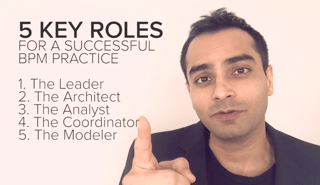The Leader
The leader's role is to ensure that there is a proper vision, mission and strategy for the practice and that's important because that sets the scene of where the practice goes. Particularly essential to bring in new business and create the value proposition of why the team exists and this is crucial because that will set the space and time and budget for the work to be done.
The Architect
The architect's primary aim is to deliver on the value. Now the value, once agreed on, has to be delivered and implemented in a proper way so that entire life cycle from inception of value to delivery has to be handled by the architect. The architect also is in the business of relationships. The relationships fall under three categories:
- Relationships of people,
- relationships of processes,
- the relationships of technologies,
The architect has to be across all of those elementsand it's quite important that they handle this and understand dependencies because that's what you want to get at the end of the day.
The Analyst
Now the analyst is an improvement specialist. The improvement specialist that handles the transition, the actual implementation of the as-is state to the to-be state. They're also quite involved in making sure that they conduct a deep elicitation of business requirements, which is the only way that one can understand how to get from the current state to the to-be state
The Coordinator
The coordinator is a lot like the project manager of the team. The project manager has to have a very strong and robust intake machine so that they can bring in work and allocate it accordingly, that they've got enough staff, enough people to actually perform that work. It is also very important to keep a handle on the budget. Because without the budget, there's no work you can do. That’s important because as a coordinator, you would have the responsibility of ensuring that there is correct staff and if there isn't, to augment that staff with the right people.
The Modeler
 The modeler is there to document the processes -but it's not just about documentation of processes. It's about having the skills to actually discover these processes and then document them, of course. They are someone who has all those skills and make sure that they are able to apply it in a workshop setting or be able to do deep analysis of documentation. That's important for a modeler to do, but their job doesn't end there.
The modeler is there to document the processes -but it's not just about documentation of processes. It's about having the skills to actually discover these processes and then document them, of course. They are someone who has all those skills and make sure that they are able to apply it in a workshop setting or be able to do deep analysis of documentation. That's important for a modeler to do, but their job doesn't end there.
They have one more key activity, which is to govern the information the information that is received, so governing off process models that go from one stage of the lifecycle to another, from inception to creation to review to finally consumption. Those key areas need someone like a modeler to ensure that it's done correctly and the information remains up to date.




